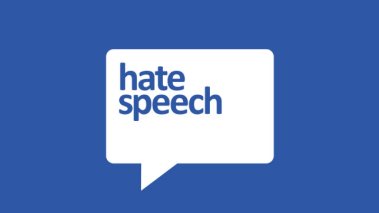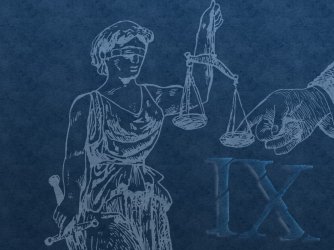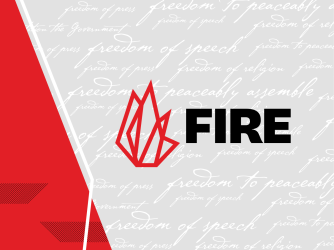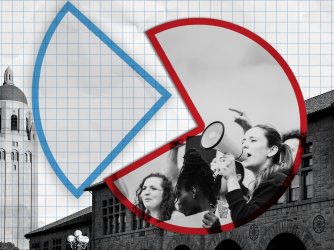Table of Contents
Law review article ‘Defining Hate Speech’ attempts the impossible

Free speech advocates like FIRE have long argued that so-called “hate speech” is inherently subjective and impossible to define, which is one of the many reasons why we caution against trying to ban it. Andrew Sellars, however, attempts this feat in his latest article, “Defining Hate Speech.”
In his piece, Sellars, director of the Technology & Cyberlaw Clinic at Boston University School of Law, surveys the wide range of attempts to craft a workable definition of hate speech. He immediately acknowledges that he is diving into a contentious debate:
Few pairs of words evoke such a diverse range of feelings, perspectives, and reactions as “hate speech.” Calls are made for it to be embraced, tolerated, ridiculed, targeted for counter-speech, blocked on websites, actionable in a civil lawsuit, made criminally illegal, or the basis of war crimes prosecution, with no shortage of shading in between. [Footnotes omitted.]
After discussing the theoretical underpinnings of protecting free speech, he turns to the many efforts to define hate speech by scholars, legislators, and online platforms. He explains that much of the academic scholarship on hate speech leads with examples rather than definitions which, devoid of context, evoke former Supreme Court Justice Potter Stewart’s famous statement on obscenity: “I know it when I see it.”
“What makes hate speech even more difficult than obscenity is that for hate speech Justice Stewart’s statement is less likely to be true,” Sellars adds.
Even the most objective and unbiased scholars bring their own perspectives and motivations to the table when forming a comprehensive definition of the term, a result that underlies the difficulty of creating an acceptable framework. The only consensus Sellars finds is how the speaker, listener, and subject of discussion all factor into these definitions, meaning that free speech can become hate speech based on factors unbeknownst to the speaker. When a definition of hate speech relies on the listener’s subjective opinions and feelings, we may not know hate speech even when we see it. This can only lead to widespread self-censorship, as uncertain speakers will remain silent rather than risk punishment for violating vague standards.
Turning to existing legal definitions of hate speech, one might assume Sellars would look exclusively to international laws, as there is currently no hate speech exception to the First Amendment. However, he notes that the United States did not always protect hate speech, citing Beauharnais v. Illinois, a 1952 Supreme Court case upholding an Illinois law prohibiting the publication of media that “portrays depravity, criminality, unchastity, or lack of virtue of a class of citizens, of any race, color, creed or religion.” Aptly characterized by Sellers as the “historical high point” of hate speech proscription in the United States, the now-obsolete unconstitutional hate speech definition in Beauharnais is similar to current definitions in Australia, the United Kingdom, Canada, and those created by the European Union and the United Nations. These legal definitions tend to require an intent to create hatred based on an individual’s or group’s immutable characteristics. Sellars notes that differences among these definitions reflect the values of each nation’s legal system; hence, similar countries take similar approaches.
He then moves to the definitions Twitter, Facebook, and YouTube use to moderate their websites. These have particular relevance in the United States because of the popularity of these online platforms and the government’s inability to legally punish hate speech. Sellars explains how these platforms take a shoot-first-ask-questions-later approach to prohibiting hate speech by promulgating broad definitions of the term along with exceptions for certain kind of favored speech. For example, Facebook flags “slurs or racial comments of any kind; (2) attacking based on a protected category; [and] (3) hate symbols” as “hate content,” but its enforcement policy includes “[c]arve-outs for humor, discussion of public figures, and speech that opposes hatred.”
In his final section, Sellars extracts the eight most common traits of the hate speech definitions previously discussed. Importantly, these traits reflect First Amendment jurisprudence by incorporating judicial rationales regarding unprotected speech. Familiar refrains from the tests for obscenity, true threats, and student-on-student harassment find their way into the most prominent definitions of hate speech. This shows that even those opposed to the First Amendment’s various protections and exceptions could benefit from understanding them, as they form the foundation of many of the most popular hate speech definitions.
Sellars’ comprehensive analysis builds to his humbling conclusion:
In the above sections I have labored through many definitions and examined their theoretical shortcomings. All of this may feel as though I am trying to work scholars and regulators to such a confused place that they refuse to study hate speech altogether. This is not my intent at all. I only seek to illustrate that this is difficult, it is difficult for good reason in light of the competing interests at play, and we should approach these questions in an intelligent manner. A person who says they have an easy solution to the problem of hate speech, or even how to observe and document hate speech, is simply not thinking hard enough.
Sellars is partially correct. Defining hate speech is not just difficult; it’s impossible, as evident from the vastly different definitions surveyed by Sellars. This inability to agree on even a basic framework underscores the futility of creating a definition narrow enough to protect free speech yet broad enough to cover any discernible category of expression. Sellars’ research encompassing hundreds of irreconcilable definitions has yielded no happy medium, only the realization that the United States already strikes this balance through the narrow categories of speech unprotected by the First Amendment.
However, Sellars is spot on in concluding that regardless of where you stand on the question of whether the government can or should ban hate speech, discussion is best approached through thoughtful evaluation. We at FIRE have written our fair share on the folly of defining and punishing hate speech, but we all can benefit from gaining a different perspective on the issues we care most about. Sellars’ piece — especially the plethora of helpful literature cited therein — is a great place to start.
Recent Articles
FIRE’s award-winning Newsdesk covers the free speech news you need to stay informed.

BREAKING: New Title IX regulations undermine campus free speech and due process rights


Stanford president and provost cheer free expression in open letter to incoming class
